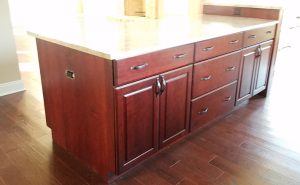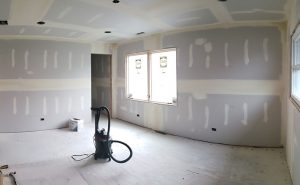Your basic walls may become textured works of art using the flexible and imaginative method known as sponge painting. You may quickly use this approach to your own house with the correct tools and some basic direction. From gathering your supplies to completing your masterwork, this blog will guide you through the fundamentals of sponge painting regardless of your experience with do-it-yourself projects.
What is Sponge Painting?
Sponge painting is a wall treatment method that produces textured, detailed patterns on your walls using a sponge to spread several layers of paint or glaze. Unlike conventional painting techniques, sponge painting gives your room depth and dimension, providing a distinctive, personal appearance. Depending on your color scheme and application method, this approach will produce everything from a gentle, subtle impression to a strong, dramatic design.
The Components You Will Require
You should get all the tools before starting your sponge painting job. Being ready guarantees that the procedure is seamless and fun. Your list of necessary elements here is:
Latex Paint or Glaze: Your project starts with latex paint or glaze. For more depth, put one or two colors over the base coat.
Base Coat Paint: The backdrop is a lighter shade called base coat paint. Your sponge work will be based on this initial layer.
Natural or Synthetic Sponge: Either synthetic or natural sponge: While synthetic sponges are simpler to clean and more durable, natural sponges produce a more irregular texture.
Paint Tray and Liners: Paint Tray and Liners are essential for storing paint and cutting extra off your sponge.
Paint Tray and Liners: Stirring paint or combining paint with glaze requires mixing sticks.
Painter’s Tape: To cover trim or edges—areas you desire not painted.
Getting Ready for Your Space Before You Start
A good sponge painting job depends on enough preparation. Move any furniture and wall hangings outside the area you intend to paint. Drop cloths will help to cover the floor, shielding it from paint splatters. Completely clean the wall to eliminate any dust, grime, or grease likely to compromise paint adherence. Apply painter’s tape along the edges of your clean wall to guard the trim, ceiling, and other walls from paint.
The Value of Choosing Your First Color
Any sponge painting project’s appearance depends much on the base coat’s color. It determines the tone of the entire design and influences the interaction of the extra color layers. Though it can be anything that accentuates your intended look, the base coat is frequently a light, neutral hue. Remember that layering colors is the essence of sponge painting; hence, consider how your base coat will balance the other colors you intend to use.
For your sponged layers, you may think of richer hues like brown or gold if you decide on a light beige for your basic coat. This gives the wall a rich, multi-dimensional appearance when the base coat peeks through the sponge layers.
Paint from Glaze: Their Differences
Sponge painting allows you to use glaze or paint. Though they are the sponging medium, their effects differ.
Paint: Usually more opaque and strong, paint will vividly and dramatically change your walls. It rules the base coat and works wonderfully for designing robust designs.
Glaze: Conversely, glaze may be blended with paint and is transparent. Sponged over the base coat produces a softer, more subdued appearance. The glaze gives the wall a mixed, textured look by showing some underlying colors.
The appearance you’re trying for will determine whether paint or glaze is best. If you like a more vivid and stunning artwork, paint is the choice approach. The glaze is ideal if your desired texture is softer and more subdued.
Most Popular Color Combos for Sponge Painting
Color choices influence the whole impression of your sponge painting endeavor. The correct colors will change a room. Here are some often-used combos to get ideas:
Shades of Blue: Perfect for baths or bedrooms, a navy base color with light blue sponged on top exudes calm peace.
Neutrals: A typical pair is brown and beige. Brown gives depth and substance; beige is a blank basis. This mix looks great in living rooms, dining rooms, and bedrooms.
Sponge Painting Advice and Techniques
This professional advice can help you to elevate your sponge painting project:
Use Natural Sea Sponges: Natural sea sponges provide more aesthetically appealing random, organic textures than manufactured ones.
Practice initially: Before attacking the wall, try sponge painting on a scrap piece of drywall or cardboard. This allows you an opportunity to improve your technique.
Go Light on Paint: Less is indeed more. Apply paint or glaze lightly at first, then layer as needed progressively.
FAQs
What is the Best Sponge for Painting?
Perfect for producing a random, distinctive texture are natural sea sponges. More diversity than synthetic sponges and durability define them.
Are Sponge Painted Walls Still in Style?
True! As homeowners want distinctive, textured patterns that stand out from conventional paint jobs, sponge painting is returning.
Is rolling rags better than painting sponges?
While sponge painting provides more textures, rag rolling produces softer, more blended designs. Choose depending on the appearance you wish to get.
Final Thoughts
Sponge painting is an excellent approach to give your inside areas character and depth. Sponge painting provides countless opportunities for producing a distinctive design whether your desired appearance is strong, dramatic, or subtle, textured impact. Your walls may become dynamic pieces of art that will wow anybody who walks into your house with the correct supplies, planning, and expertise. lovely painting!



